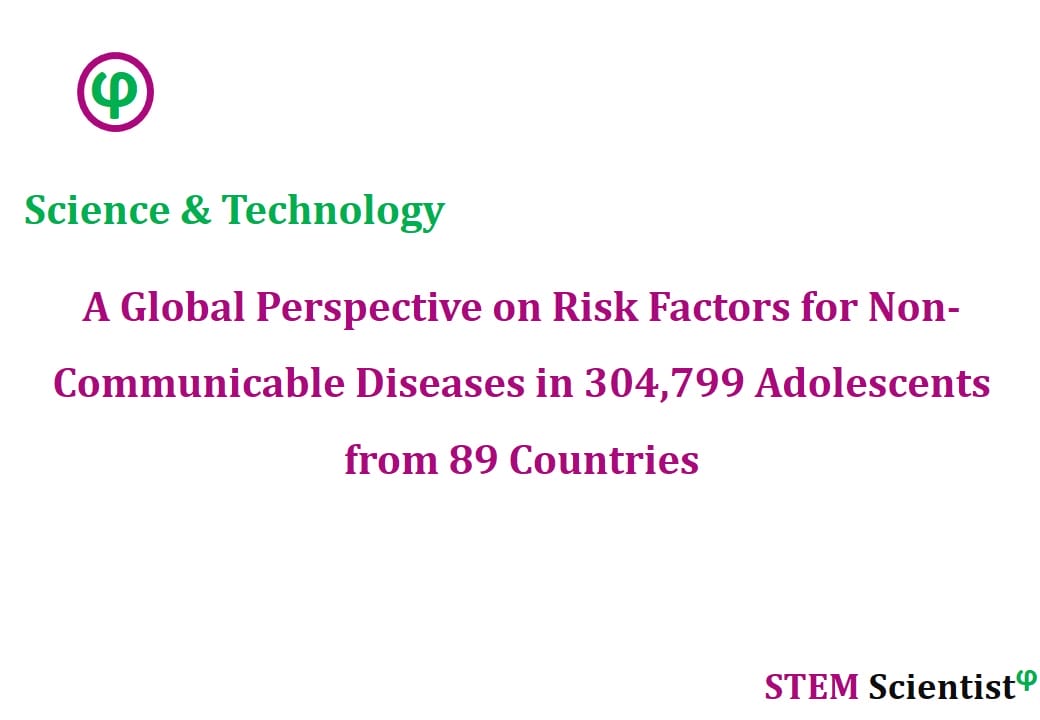
The following study was conducted by Scientists from The University of Queensland, Australia; Queen’s University, Canada; Queensland University of Technology, Australia; Children’s Hospital of Eastern Ontario (CHEO) Research Institute, Canada.
Scientists investigated the prevalence and clustering of six major Non Communicable Diseases (NCD) risk factors in 304,779 adolescents, aged 11–17 years from 89 different countries. Detailed analysis reported that adolescents exhibited multiple modifiable risk factors for future development of NCDs.
Preventive Medicine; Volume 131, February 2020, 105955.
Clustering of Lifestyle Risk Factors for Non-Communicable Diseases in 304,779 Adolescents from 89 Countries: A Global Perspective
Highlights
- One in three adolescents had ≥3 risk factors, with more males reporting than females.
- American region had the highest prevalence (one in two) of ≥3 risk factors.
- Smoking, alcohol, physical inactivity, and low fruit-vegetable clustered in males.
- Physical inactivity, sedentary behavior, and low fruit-vegetable clustered in females.
- Smoking and alcohol strongly clustered in both sexes across all regions.
Abstract
The precursors of non-communicable diseases (NCDs) are often manifested during childhood and adolescence with little knowledge about co-occurrence of their related lifestyle risk factors. To address this deficit, we estimated the prevalence and clustering of six major NCD-risk factors in adolescents around the world. Data from the Global School-based Student Health Survey, collected between 2007 and 2016, were analyzed in 304,779 adolescents aged 11–17 years (52.2% females) from 89 countries. We compared the observed (O) to expected (E) prevalence ratios of 64 possible combinations of six risk factors to determine their clustering patterns. Overall, 82.4% (95% CI 82.1–82.7) of adolescents had ≥2 risk factors, while 34.9% (34.6–35.3) had ≥3. Adolescents aged 16–17 years, compared to those aged 11–13 years, had higher odds (OR 1.33; 95% CI 1.31–1.36) of reporting ≥3 risk factors. Risk factors clustered in multiple combinations and differed by sex. The clustering of physical inactivity and low fruit and vegetable intake was evident in both males (O/E 1.10; 95% CI 1.07–1.12) and females (1.08; 1.06–1.10). The co-occurrence of cigarette smoking, alcohol drinking, physical inactivity, and low fruit and vegetable intake was 165% greater in females (2.65; 2.28–3.07) and 110% greater in males (2.10; 1.90–2.32) than expected. Globally, adolescents exhibit multiple modifiable risk factors for future development of NCDs. Early gender-specific prevention strategies targeting clusters of lifestyle risk factors should be prioritised to help mitigate future burden of NCDs globally. Periodical collection of behavioural risk factor data should be encouraged to facilitate a sustainable global surveillance.
Source:
Preventive Medicine.
URL: https://www.sciencedirect.com/science/article/pii/S0091743519304384?via%3Dihub
Citation:
Uddin, R., E.-Y. Lee, et al. (2020). “Clustering of lifestyle risk factors for non-communicable diseases in 304,779 adolescents from 89 countries: A global perspective.” Preventive Medicine 131: 105955.


